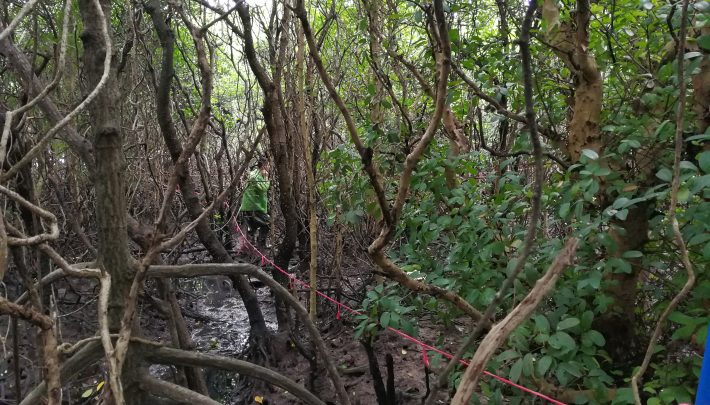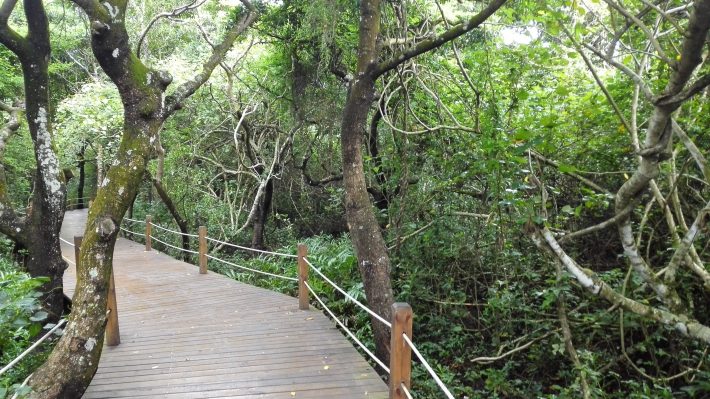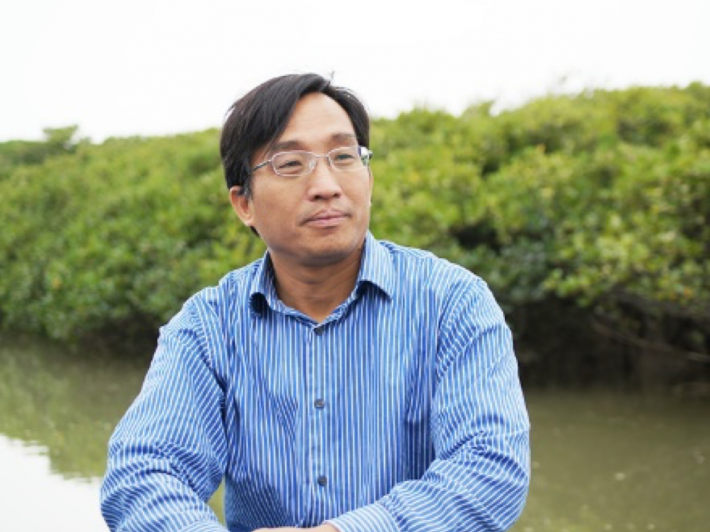Mangrove forests store more carbon when they’re more diverse
Mangrove forests with greater species diversity can store more carbon, according to new research published in the British Ecological Society journal Functional Ecology.

Researchers studying mangrove forests in Hainan Island, China, have found that species diversity in mangrove forests enhances both biomass production (the quantity of organic matter) and soil carbon storage. The findings highlight the importance of conserving mangrove biodiversity as a nature-based solution to mitigate climate change.
The East side of the island was found to have the highest mangrove biomass, diversity and carbon storage, with a mean of 537 tonnes of carbon per hectare (Mg C ha-1). This compared to a mean of 328 Mg C ha-1 across the entire island, and the world mangrove forest mean of 386Mg C ha-1.
This is the first study based on an intensive field study to verify the positive effect of biodiversity on mangrove biomass and carbon storage.

Mangroves grow in tropical regions and are one of the most carbon rich ecosystems on the planet. There are over 70 different species worldwide with 27 of these in China and 26 in the areas studied by the researchers.
Because of the large representation of mangrove species in the study area, the researchers believe the results can be applied to other regions of China and the rest of the world, especially other Asian countries which have similar mangrove species diversity.
The researchers also found that areas with high soil nitrogen content and annual rainfall had higher mangrove biomass and carbon storage potential, indicating that both soil fertility and climate factors determine areas of high mangrove diversity and carbon storage.
Dr Guanghui Lin of Tsinghua University and one of the authors of the study, said: “Our findings suggest that mangrove forests with greater diversity also have higher carbon storage capacities and conservation potential. Thus, mangrove biodiversity conservation is crucial for ensuring mangrove forests are able to mitigate climate change.”
We can increase mangrove diversity through restoration and conservation projects, especially those that promote local native species.
Professor Xiaoshan Zhu, also of Tsinghua University and another author of the study, said: “Worldwide, particularly in developing countries such as China, mangroves have been lost or degraded over the last several decades. Restoration of mangrove forests and their habitats are urgently needed not only for preservation of biodiversity but also to increase carbon storage potentials.”
Another benefit of increasing mangrove species diversity is that it will help to maintain the stability of mangrove ecosystems against disturbances like climate change and extreme weather. This in turn ensures mangrove forests continue to provide a habitat for the hundreds of species that rely on them.
Mangrove forests consist of trees, shrubs and other woody plants growing in the tidal zones of tropical and sub-tropical coastlines. They provide numerous ecological services including water purification, coastal protection, habitat provision and carbon storage.
The 26 mangrove species found on Hainan Island, where the researchers conducted the study, ranged from 30m tall trees such as Sonneratia and Bruguerria species, to shrubs of only a few meters such as Avicennia marina.
A higher diversity of mangrove species leads to a more complex ecological community that can access more of the resources available. This is why species diversity leads to a faster accumulation of mangrove biomass.

In the study the researchers conducted an intensive field survey of mangrove biodiversity and carbon storage along the entire coastline of Hainan Island, which has nearly 20% of China’s mangrove forest area.
Between 2017 and 2018 they collected data from 234 10m2 field plots along 30 transects distributed across the four main mangrove sites on the island. In each plot they collected data on the size, density and number of mangrove species, as well water and soil salinity and pH.
They then calculated the carbon storage of the plant biomass using known carbon concentrations for each species and soil carbon and nitrogen content using soil samples from each of the 30 transects.
A limitation of the study was that it was restricted to an isolated island. The authors are now compiling data for the rest of China and other countries with mangrove forests around the world. “This will allow us to test the relationship between plant species diversity and mangrove carbon storage found in this study.” said Dr Guanghui Lin.
You can read the research article in full for free (for a limited time) here:
https://besjournals.onlinelibrary.wiley.com/doi/10.1111/1365-2435.13753
Media contact:
Davy Falkner, Media Relations Officer, British Ecological Society
Email: davy@britishecologicalsociety.org, T: +44 (0) 7525 966 919
Like what we stand for?
Support our mission and help develop the next generation of ecologists by donating to the British Ecological Society.